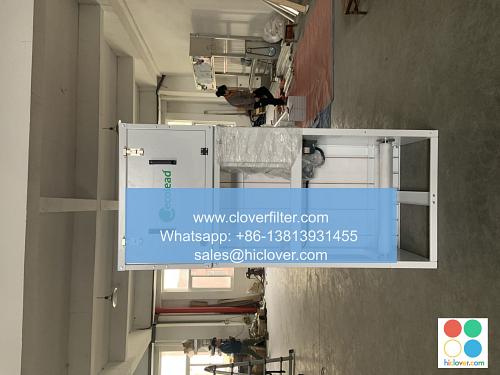Airborne Pollutants and Health Risks: The Significance of Effective Air Filtration

Air pollution has become a major concern in recent years, with the World Health Organization (WHO) estimating that 9 out of 10 people worldwide breathe polluted air. Airborne pollutants, such as particulate matter (PM), nitrogen dioxide (NO2), ozone (O3), and volatile organic compounds (VOCs), can have severe health risks, including respiratory problems, cardiovascular disease, and even cancer. In this article, we will discuss the importance of effective air filtration in reducing the health risks associated with airborne pollutants and explore its various application areas.
Types of Airborne Pollutants
There are several types of airborne pollutants that can have adverse effects on human health. These include:
- Particulate matter (PM): PM is made up of tiny particles that can penetrate deep into the lungs, causing respiratory problems and other health risks.
- Nitrogen dioxide (NO2): NO2 is a toxic gas that can exacerbate respiratory problems, such as asthma, and increase the risk of cardiovascular disease.
- Ozone (O3): O3 is a powerful oxidizing agent that can damage lung tissue and increase the risk of respiratory problems.
- Volatile organic compounds (VOCs): VOCs are a group of chemicals that can cause a range of health problems, including headaches, dizziness, and cancer.
- Respiratory problems: Airborne pollutants can cause or exacerbate respiratory problems, such as asthma, chronic obstructive pulmonary disease (COPD), and lung cancer.
- Cardiovascular disease: Exposure to airborne pollutants can increase the risk of cardiovascular disease, including heart attacks, strokes, and arrhythmias.
- Neurological problems: Some airborne pollutants, such as VOCs, can cause neurological problems, including headaches, dizziness, and cognitive impairment.
- Cancer: Long-term exposure to certain airborne pollutants, such as PM and VOCs, can increase the risk of cancer.
- HEPA filters: High-efficiency particulate air (HEPA) filters can remove 99.97% of particles as small as 0.3 microns, including PM, NO2, and VOCs.
- Activated carbon filters: Activated carbon filters can remove VOCs and other gases from the air, improving indoor air quality and reducing the risk of health problems.
- UV air purifiers: Ultraviolet (UV) air purifiers can kill bacteria, viruses, and other microorganisms, reducing the risk of infections and health problems.
- Indoor air quality: Air filtration systems can improve indoor air quality, reducing the risk of health problems and improving overall well-being.
- Healthcare: Air filtration systems can be used in healthcare settings to reduce the risk of infections and health problems among patients and staff.
- Industrial settings: Air filtration systems can be used in industrial settings to remove airborne pollutants and improve worker safety and health.
- Transportation: Air filtration systems can be used in vehicles to remove airborne pollutants and improve air quality, reducing the risk of health problems among passengers.
Health Risks Associated with Airborne Pollutants
The health risks associated with airborne pollutants are numerous and can be severe. Some of the most significant health risks include:
The Significance of Effective Air Filtration
Effective air filtration is crucial in reducing the health risks associated with airborne pollutants. Air filtration systems can remove airborne pollutants from the air, improving indoor air quality and reducing the risk of health problems. There are several types of air filtration systems available, including:
Application Areas of Effective Air Filtration
Effective air filtration has numerous application areas, including:
Conclusion
In conclusion, airborne pollutants can have severe health risks, including respiratory problems, cardiovascular disease, and cancer. Effective air filtration is crucial in reducing these health risks and improving indoor air quality. With its various application areas, including indoor air quality, healthcare, industrial settings, and transportation, effective air filtration is an essential tool in promoting public health and well-being. By understanding the types of airborne pollutants and the health risks associated with them, individuals and organizations can take steps to reduce exposure and improve air quality, ultimately reducing the risk of health problems and promoting overall well-being. It seems like you didn’t include a question or topic for discussion in your prompt. Could you please provide more details or clarify what you would like to talk about?

